Authorities reopened the main road into the West Maui town of Lahaina only 10 days after the fire, after removing many downed power lines and clearing the road of countless burned-out vehicles abandoned by fleeing residents. Despite the high level of hazardous contamination in the fire’s wake, locals were impatient with the delay, anxious to see for themselves what remains of their homes, and to ponder their collective future.
Photograph: Matthew Thayer/AP
As initial damage assessments and the Hazmat-clothed first-responder search for human remains wound down, locals’ pent-up grief, pain, anger, and suffering came to the fore. In the early days they asked pointedly “Where is the government?”—noting that West Maui received nearly immediate basic material aid from Native Hawaiians arriving by boat from the nearby islands of Lana’i and Moloka’i. The spirit of mutual self-help is a core communitarian value in Hawai’i.
Assistance did come in the inevitably chaotic first days from the American Red Cross (a key FEMA partner), nonprofits, faith-based organizations, foundations, private donors, and Hawaiian state government. (NOTE: It is not generally understood that FEMA’s presence is only ever at the invitation of the Governor, after requesting that the President declare a federal disaster in consultation with FEMA. It is state governments that determine and direct the parameters of every disaster response effort, including FEMA’s technical, logistical, and financial support role.)
First responders evacuated survivors to mass shelters in Wailuku and other areas away from the immediate burn zone. Coordinated by the Red Cross, several thousand survivors moved into hotel rooms, bed and breakfasts, and private vacation rentals, all on FEMA’s tab. Other survivors moved in with family and friends elsewhere on Maui, the other islands, or in the Continental 48.
Those with no alternative may stay in provisional “non-congregate sheltering” for up to 18 months, but the real challenge of rebuilding their lives and community comes in the context of a decades-long shortage of affordable housing, lack of decently paid labor, and equally important, prevailing indifference to Native Hawaiian land and water rights.
Billionaire Maui landowners including Jeff Bezos, Peter Thiel, and Oprah Winfrey predictably came in for criticism as high-profile part-time residents whose presence is seen as contributing to pricing out ordinary Hawaiians. Winfrey did turn up on August 16 with a film crew and slipped into the largest temporary mass shelter, the War Memorial Gymnasium in Wailuku, intending to hand out bedding and other basic supplies. It did not go well.
One shelter resident who survived his boat burning and sinking in Lahaina harbor gleefully told me that when Winfrey handed him a pillow, he threw it back at her, asking why she did not donate real money to the recovery. Approached and informed by shelter authorities that privacy concerns prohibited the filming of sheltering survivors, the entourage was escorted out.
Undaunted, on August 31 Winfrey teamed with wrestler-actor Dwayne Johnson on Instagram to announce a new charitable foundation, the People’s Fund of Maui, seeded with their combined $10 million donation. Inviting their followers to contribute to the island’s recovery sparked a social media backlash deriding what many respondents saw as miserly seed funding, piling on to inquire why they and others of the Maui billionaire class who, not ponying up far more themselves, instead were tapping working people who could never afford to vacation let alone live in Maui.
In any case, as the K–9 teams, scuba divers, equipment operators, and safety inspectors wrapped up their work, a hard reality settled in. An unknown number of people, often elderly or very young, remain unaccounted for. More than ever, locals observe, all of Lahaina is now sacred ground.
School had begun on August 8, the very day the fire destroyed King Kamehameha III Elementary School, partially burned three other campuses, and damaged or destroyed well over 2,000 homes and buildings. Many students are being bussed to new schools or have opted for remote learning from their hotel lodging. The logistics and projected costs of cleanup and rebuilding are staggering. Recovery will not, cannot come quickly enough to this small historic town on the western end of Maui, the pre-contact royal Hawaiian capital.
As many locals see it, in an equitable world, one that respects native land and water rights, this fire never would nor should have happened. First sugar plantations, then export fruit growers, cattle ranching, and tourism development effectively monopolized water by draining the watershed and rationing water to native households and traditional taro farmers. More recently, uplands abandoned when corporate sugar and pineapple production ceased due to unprofitability have been overgrown by flammable invasive grass species, introduced by cattle ranching. For Lahaina, all it took was insufficient wildfire preparation and exceedingly high winds driven by a tropical cyclone passing far south of Hawai’i to topple power lines and spark the conflagration of August 8.
The state’s growing wildfire risk has been fanned by chronic under-investment in fire departments and training, fire prevention, and inadequate access roads. This is especially critical in the arid west of the island, where the West Maui Land Company and other big landholders have no incentive to undertake the expense of wildfire mitigation on large tracts of idle land held speculatively for possible future development. Compare this to California, where CalFire’s strict enforcement and hefty fines require landowners to clear roadsides and building perimeters of dry brush and grasses that fuel wildfires.
The felt reality of Native Hawaiian cultural disenfranchisement reflects a contentious history of power politics, corporate land ownership, a near-monopoly on employment, and the practical control of water rights, existential issues that have been a matter of antagonism since European contact some two centuries ago.
The diversion of water to commercial ends desiccated the once-lush native wetlands of Lahaina in favor of big hotels, resorts, golf courses, and vacation homes just north of the historic downtown. Carefully manicured, well-watered, and built to fire-resistant standards, those areas suffered negligible fire damage, although with a certain poetic justice, West Maui’s temporary closure to tourism has filled the hotels with survivors compensated with FEMA Individuals and Households Program grants.
Tourism infrastructure and allied services are the concrete products of local labor, workers no longer able to sustain their home communities by traditional means. An influx of even cheaper labor from as distant as Mexico, the South Pacific, and the Philippines has rendered salaries insufficient for locals to live adequately in the land of their birth.
Maui’s ever-mounting cost of living has driven many to decamp to the U.S. mainland to seek financial stability, making California and Las Vegas (“the ninth Hawaiian island”) major destinations for natives who can find the same kinds of service work at far better pay than that available at home. Inevitably, outmigration has frayed the mutually supportive character of life in native communities that have been transformed in mostly detrimental ways by tourism.
There is far more to this story, but the general pattern is familiar enough. Puerto Ricans know the script well from the consequences of Hurricane Maria, undermining a putative tropical paradise by means of impoverishment, disenfranchisement, and dislocation of working people. A similar dynamic has played out in the transformation of New Orleans after Hurricane Katrina. Other examples abound.
Naomi Klein, author of The Shock Doctrine (Knopf Canada), coined the term “disaster capitalism” to characterize the nature of cultural displacement in such areas, where catastrophe presents an opening for predatory real estate (re)development dedicated to leisure consumption and the (re)distribution of political, fiscal, and financial spoils. Jonathan Scheuer and Bianca Isaki have documented the local struggle to protect native water rights in their book Water and Power in West Maui (University of Hawaii Press).
A history of activism and vigorous local debate have regained moral traction in the wake of the Lahaina fire, saturating the airwaves, and various grassroots, environmental, and cultural arts organizations are marshaling forces to shame and pressure real estate, building, and tourism interests, as well as local and state officialdom.
West Maui from above
The island economy remains 70% tourism dependent, a fact with which all parties will need to reckon as contending forces begin to envision a different West Maui after the fire that changed everything. The story may perhaps inevitably disappear from the news, but the nature, resilience, and endurance of local organizing remains to be seen.
This is perhaps 2023’s most compelling and complex story of what much media coverage has treated simplistically as a straight-up tale of tragic misfortune resulting from “climate change.” A lazy over-simplification blurs the political reality that if indigenous water rights and culture were rightfully honored, inscribed in state law as they are, this fire never would have happened.
Native Hawai’i will not let this all go so easily. The outpouring of local mutual aid, combined with the generous spirit of aloha ʻāina, a profound reverence for natural resources and cultural traditions, and a fierce, informed, and unapologetic criticism of the structural inequities that feed disaster conflagrations like the Lahaina fire, tell a more complex and undeniable story.
By way of a coda, early in the disaster response I spied a defunct sugar factory and pulled off the road around sundown to explore. Following are images of what Richard Brautigan might well have termed “the forgotten works” from the exploitative past that created this bitter, yet still hopeful Hawaiian present.





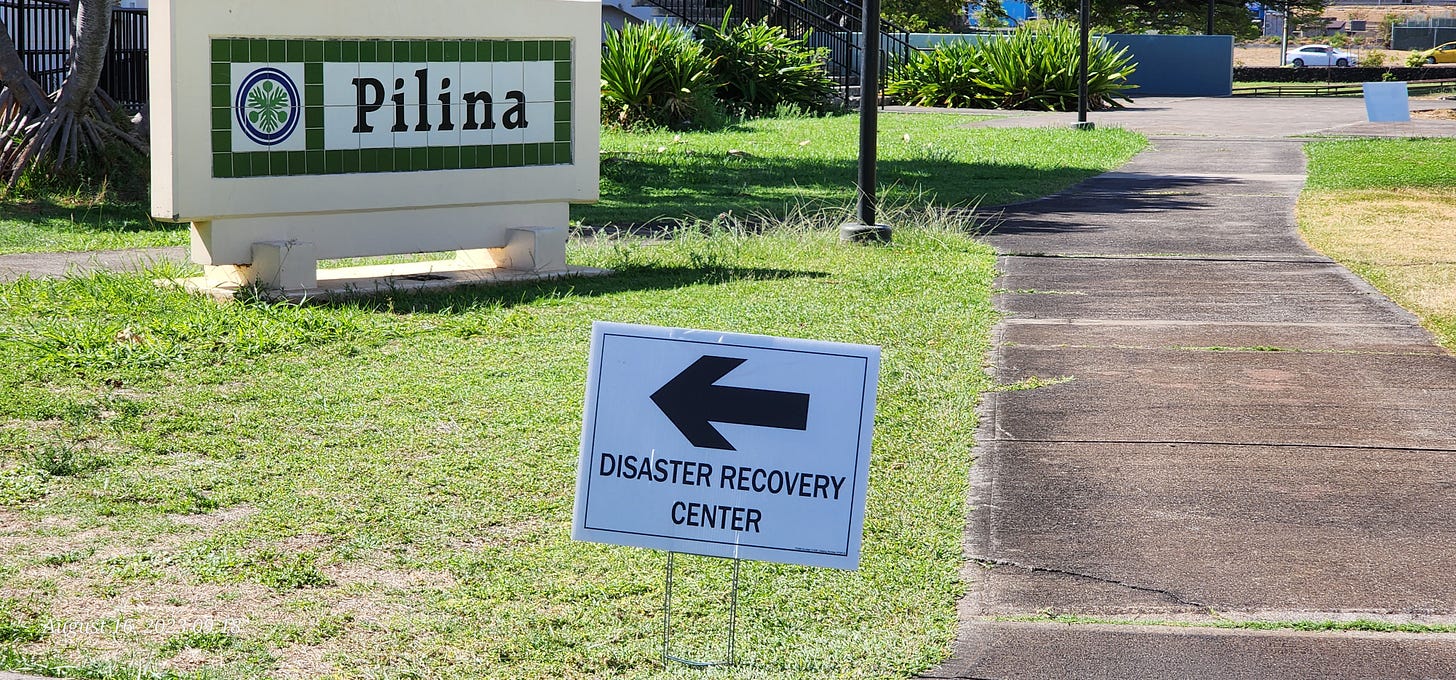
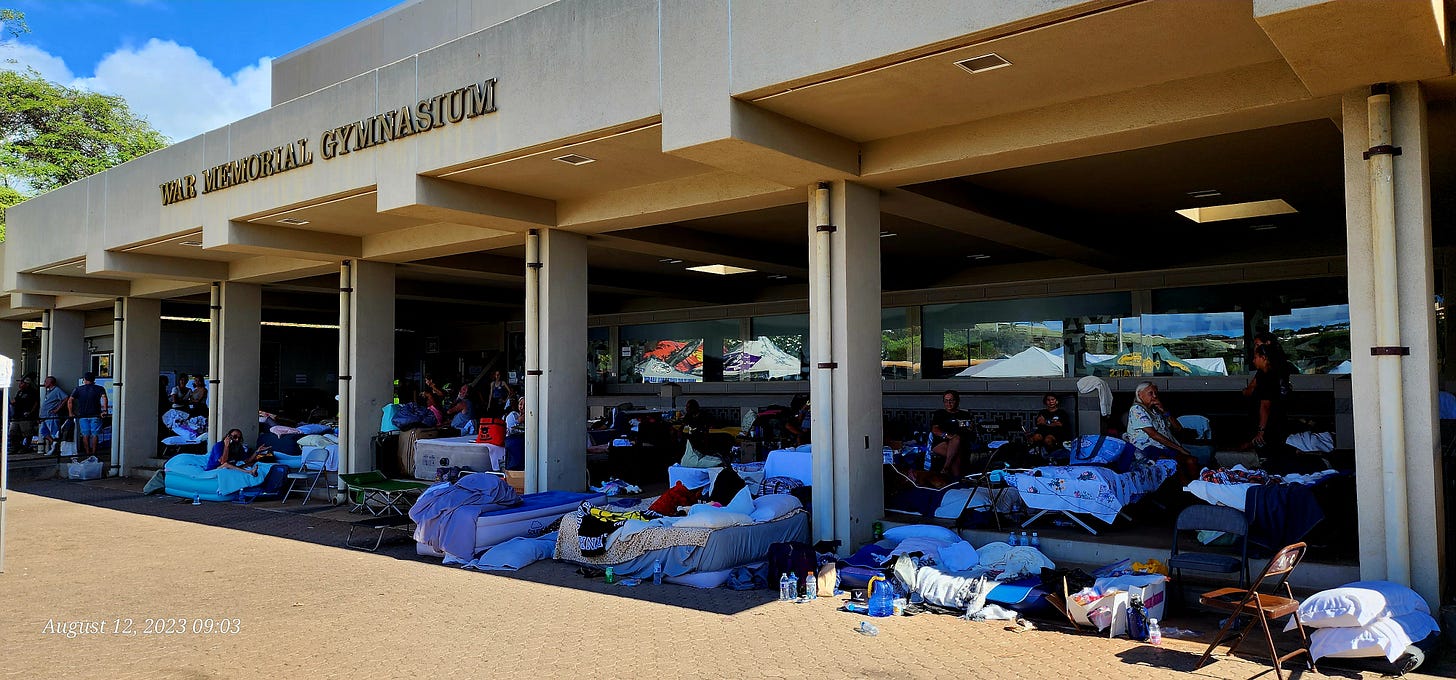
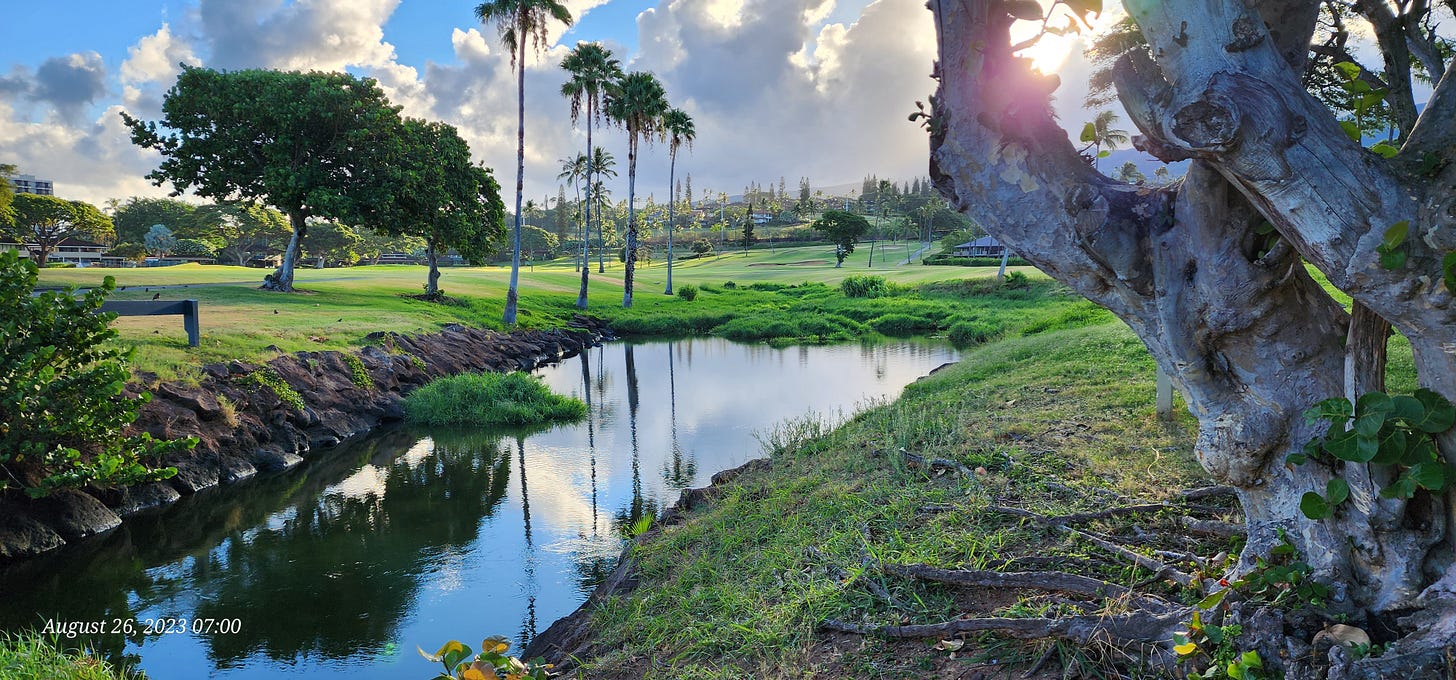
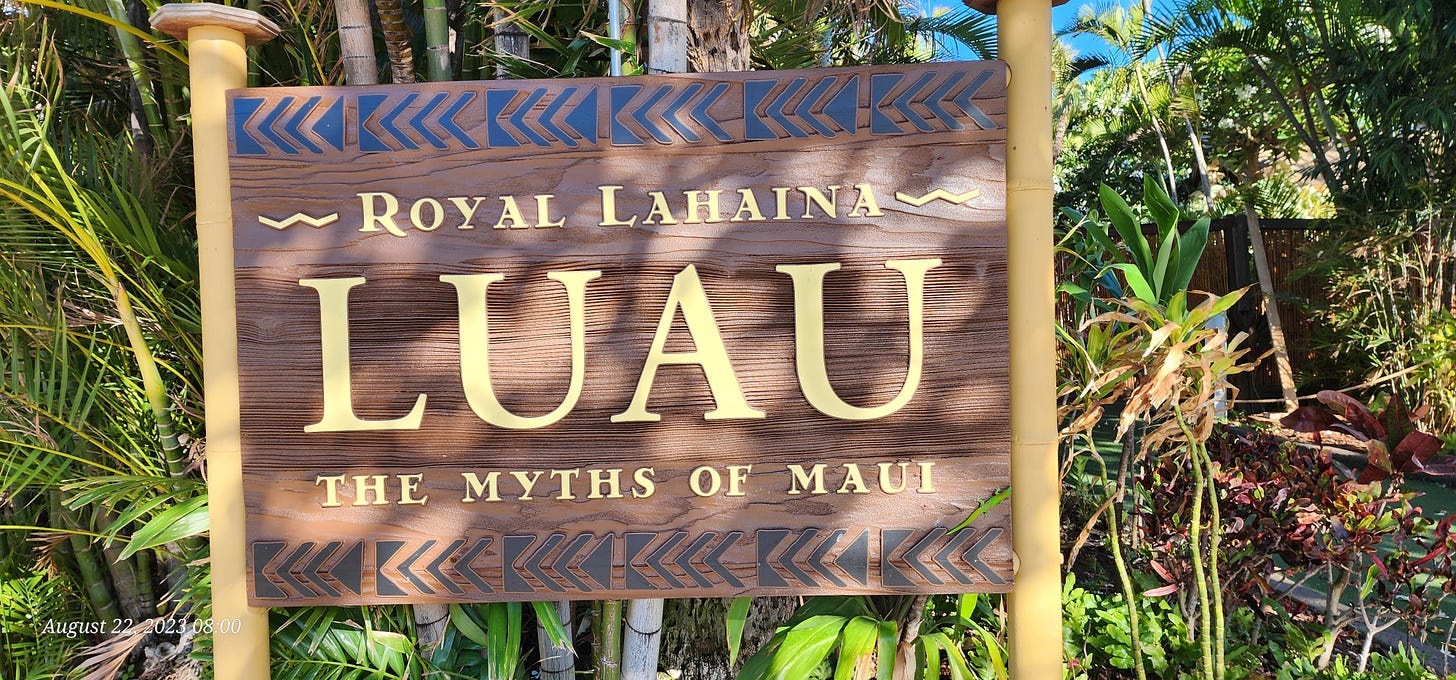
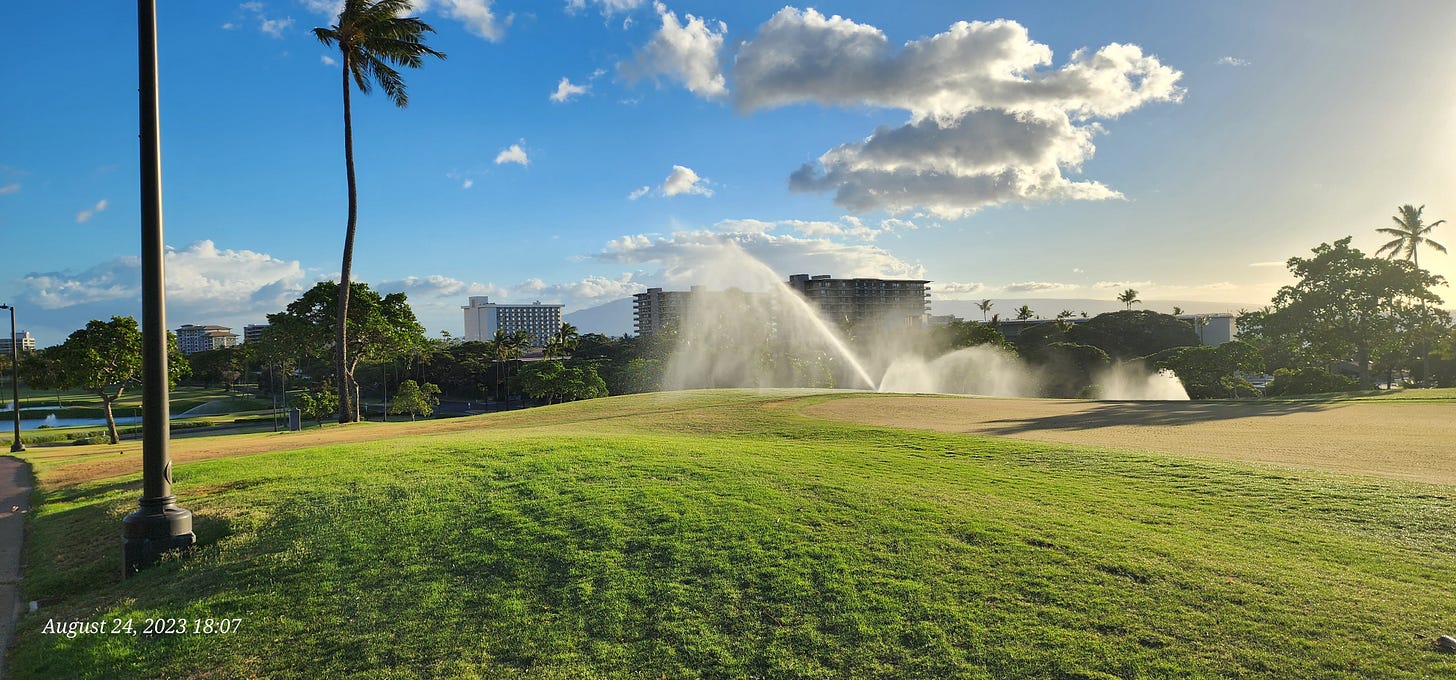
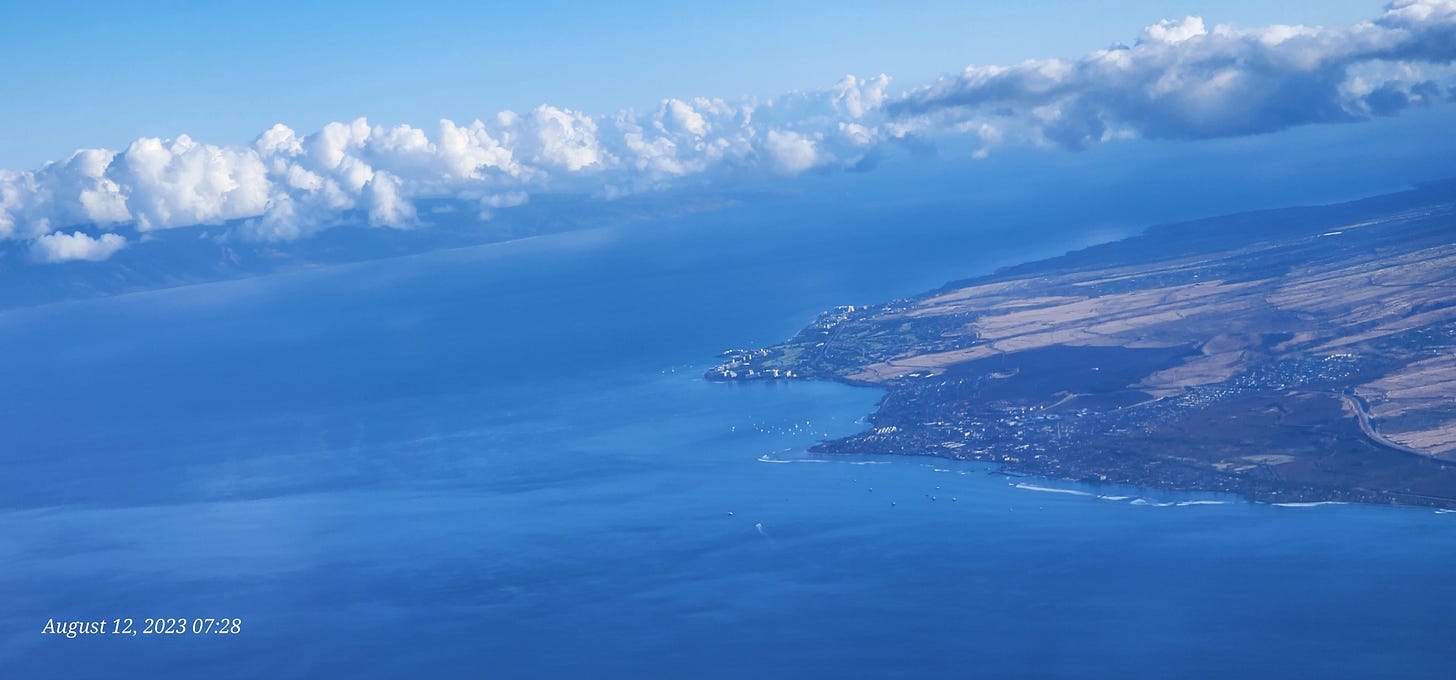

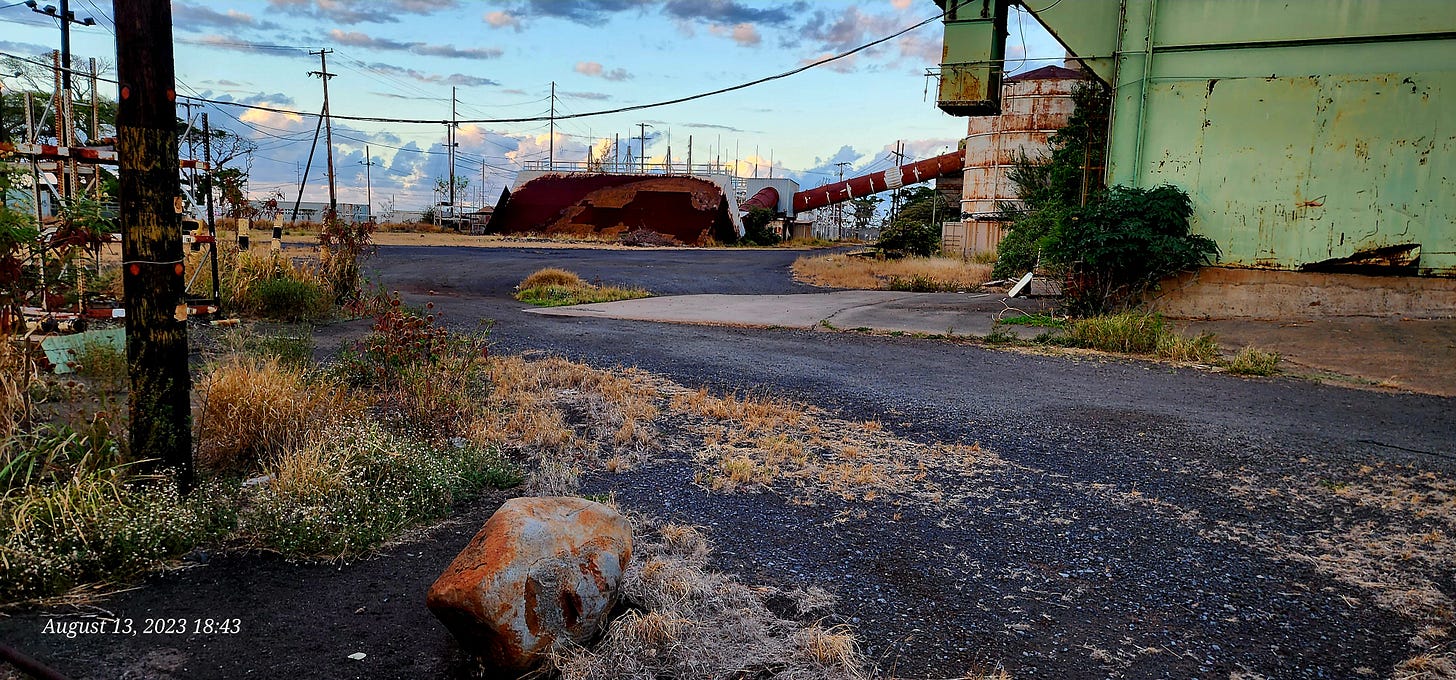
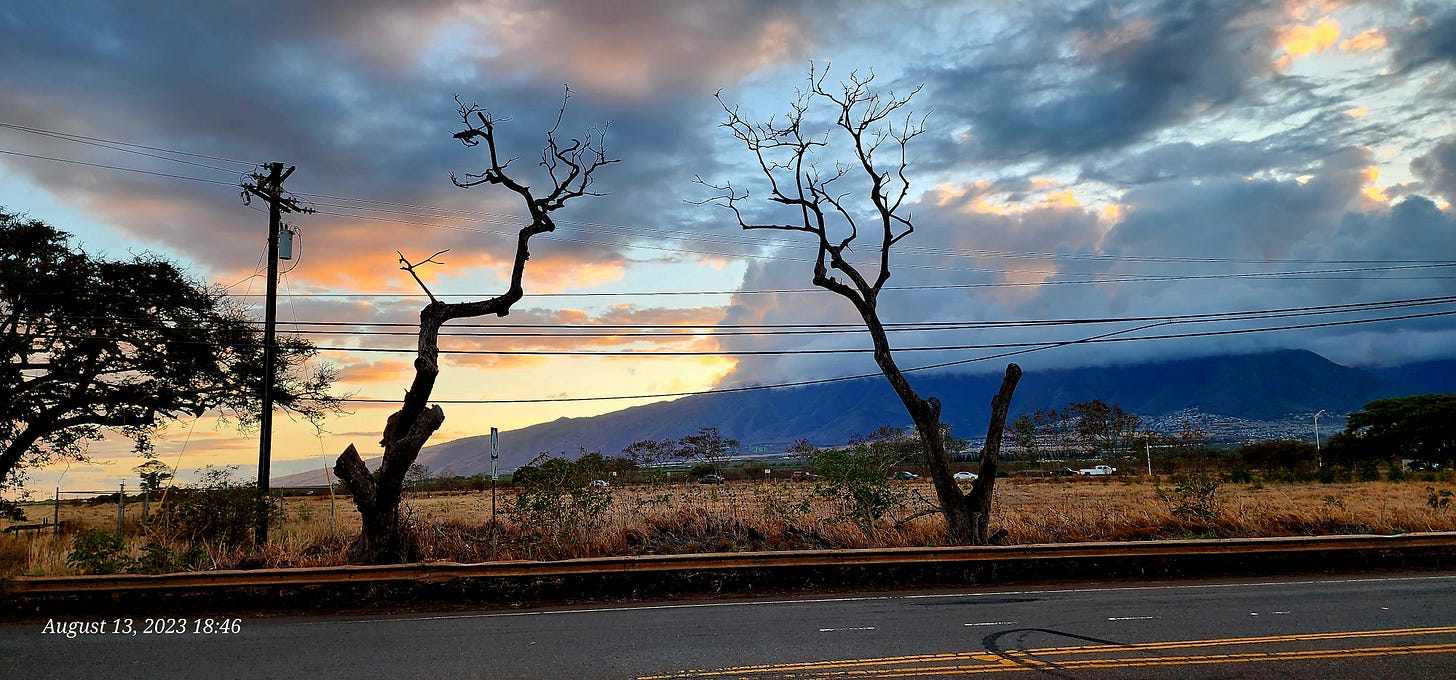
The New Yorker, "Why Maui Burned": https://www.newyorker.com/magazine/2023/11/06/maui-wildfire-response-recovery
Whoa. Thank you. I need to take all this in.....